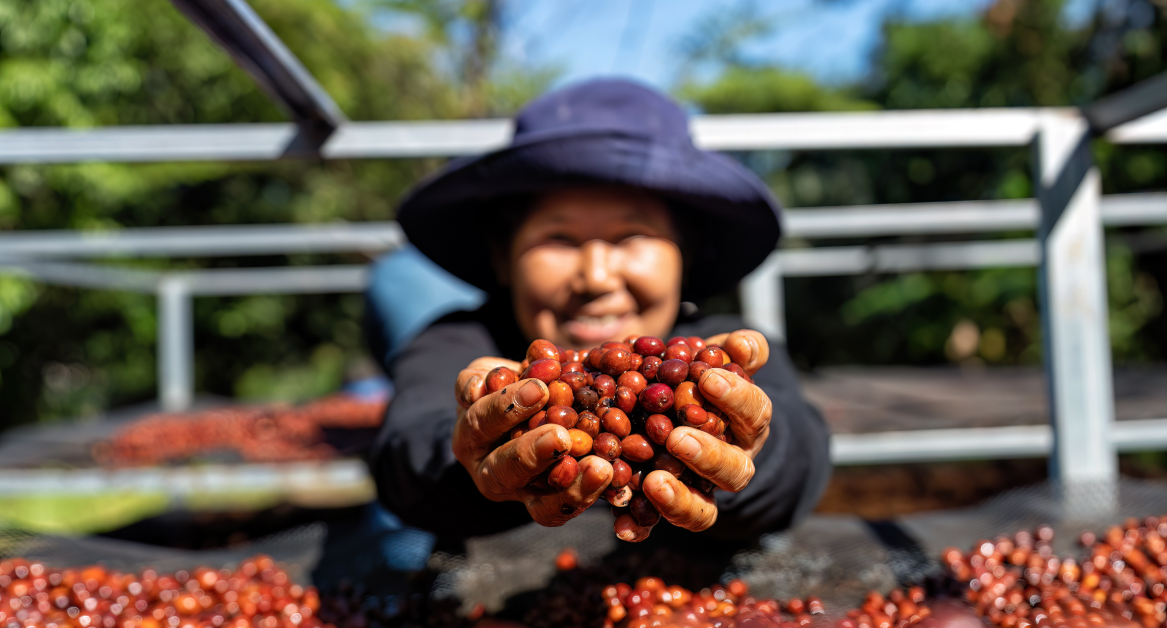In the realm of regenerative agriculture, soil health stands as the cornerstone. Discover how embracing soil health principles can revolutionize farming practices and ensure a sustainable food source for generations to come.
🔦 More readings: Exploring Sustainable Agriculture Examples Around the Globe
Understanding soil health
Soil health isn’t just about dirt; it’s a dynamic ecosystem that is vital for growing plants. At its core, it revolves around nurturing diverse organisms to ensure optimal plant growth and sustained productivity.
This ecosystem, often referred to as regenerative soil, embodies a delicate web of microscopic organisms, fungi, and bacteria, working symbiotically to create a rich, nutrient-dense foundation.
Moreover, the principles governing soil health are rooted in fostering resilience against environmental challenges. From preventing erosion to retaining moisture and nutrients, these principles are the bases of sustainable agriculture practices.
Understanding these principles unveils a world where the soil becomes more than just a medium for plant growth; it becomes a living, breathing entity that nourishes and sustains life.
5 key principles of soil health
Principle 1: Minimize soil disturbance
Traditional farming methods often involve intensive tillage, disrupting the soil structure and ecosystem. However, minimizing soil disturbance, known as conservation tillage or no-till farming, has gained traction. By reducing or eliminating tillage, farmers preserve the soil’s natural structure, minimize erosion, and protect the myriad of organisms vital for nutrient cycling and soil health.
This practice also contributes to increased organic matter retention, essential for building soil structure and fertility. As the soil remains undisturbed, microbial communities flourish, enhancing nutrient availability to plants and improving overall soil resilience.
Example tactics:
- Conservation tillage: Farmers adopt conservation tillage techniques, reducing or eliminating traditional plowing. No-till or reduced-till methods minimize soil disturbance, preserving soil structure and reducing erosion.
For instance, planting directly into residues from the previous crop maintains soil cover and structure, promoting healthier soil ecosystems.
- Strip cropping: Another approach involves strip cropping, where crops are planted in alternating strips. This method disrupts the soil less while encouraging biodiversity.
For instance, alternating rows of grains with legumes or cover crops can minimize soil erosion and improve soil health.
Principle 2: Maximize Crop Diversity
Monoculture, or the cultivation of a single crop, can deplete soil nutrients and increase vulnerability to pests and diseases. Embracing crop diversity through practices like crop rotations, intercropping, or companion planting provides numerous benefits for soil health.
Plant diversity fosters a balanced ecosystem underground, encouraging a variety of microorganisms and beneficial insects. This diversity supports nutrient cycling, improving soil fertility and structure. Furthermore, different plant roots reach varying soil depths, accessing distinct nutrients, and thus reducing competition while enhancing overall soil health.
Example tactics:
- Crop rotation: Farmers employ crop rotation, alternating different crops across seasons or years on the same land.
For example, rotating corn with legumes like soybeans or alfalfa replenishes nitrogen levels in the soil naturally and breaks pest cycles, reducing the need for chemical inputs.
- Polyculture planting: Embracing polyculture involves planting multiple crops in the same area simultaneously.
An example is the Three Sisters planting method, where Native American tribes grew corn, beans, and squash together. Corn provides support for beans, beans fix nitrogen for the soil, and squash acts as a natural ground cover, preventing weeds and retaining moisture.
Principle 3: Keep the soil covered
Maintaining soil cover throughout the year plays a pivotal role in preserving soil health. Bare soils are susceptible to erosion, leading to the loss of valuable topsoil and essential nutrients. Practices such as cover cropping, mulching, or leaving plant residues after harvest create a protective blanket over the soil.
This cover shields the soil from wind and water erosion, conserves moisture, and moderates soil temperature. Additionally, it fosters a favorable environment for soil organic matter, contributing to increased organic matter and improved soil structure.
Example tactics:
- Cover cropping: Farmers use cover crops like clover, rye, or legumes during the off-season to cover bare soil. This practice not only prevents erosion but also adds organic matter to the soil as cover crops decompose.
- Mulching: Mulching involves applying materials like straw, wood chips, or compost to the soil surface. This protective layer shields the soil from temperature extremes, minimizes weed growth, and enhances moisture retention.
Principle 4: Maintain living roots year-round
A critical principle in enhancing soil health is the presence of continual live plant root in the soil year-round. Even during non-growing seasons, having living roots benefits soil biology and structure. These roots exude sugars and organic compounds, feeding soil microbes and stimulating their activity.
Continual root presence helps in carbon sequestration, drawing carbon dioxide from the atmosphere and storing it in the soil. This process aids in mitigating climate change by reducing greenhouse gas levels while improving soil fertility and stability.
Example tactics:
- Winter cover crops: Planting winter cover crops like winter wheat or radishes ensures live roots throughout the colder months. These crops prevent soil erosion, improve soil structure, and keep the soil biologically active during the dormant season.
- Perennial planting: Incorporating perennial crops into farming systems, such as perennial grasses or legumes, ensures continual root growth year-round. Perennials establish deep root systems that enhance soil structure, prevent nutrient leaching, and increase carbon sequestration.
Principle 5: Integrate livestock
Integrating livestock into agricultural systems can significantly impact soil health. Well-managed grazing practices mimic natural grazing patterns, enhancing soil fertility and structure. Livestock grazing encourages the nutrient cycle as their grazing habits stimulate plant growth and root systems.
Moreover, their manure acts as a valuable organic fertilizer, enriching the soil with essential nutrients. Strategic rotation of livestock across pastures prevents overgrazing, allowing vegetation to recover and soil to regenerate, contributing to sustainable and resilient agricultural practices.
Example tactics:
- Rotational grazing: Farmers practice rotational grazing, moving livestock through designated pastures in cycles. This method prevents overgrazing, allowing vegetation and roots to recover while distributing manure evenly across the land.
- Silvopasture systems: Integrating livestock with tree cultivation creates silvopasture systems.
For instance, combining grazing areas with strategically planted trees provides shade for animals, enhances biodiversity, and promotes healthier soil and vegetation.
Monitoring and testing soil health
Understanding and assessing soil health is pivotal for farmers committed to regenerative agriculture. Several methods and indicators help gauge the health of the soil:
- Soil testing: Soil testing analyzes various parameters like pH, nutrient levels, organic matter content, and microbial activity. This assessment provides crucial insights into the soil’s fertility, allowing farmers to make informed decisions about necessary amendments and management practices.
- Visual assessments: Observing soil structure, aggregation, and color can offer visual clues about its health. Healthy soil often exhibits a crumbly structure, dark color (indicative of organic matter), and a thriving ecosystem of earthworms, insects, and microbial activity.
- Cover and biomass measurements: Measuring the amount of soil cover and biomass present on the field helps determine how effectively the soil is being protected. Higher levels of cover indicate better erosion control and enhanced soil health.
- Infiltration and water holding capacity: Assessing how quickly water infiltrates the soil and its ability to retain moisture is crucial. Healthy soils with good structure and organic matter content absorb water readily and retain it for plant use, reducing runoff and erosion.
- Biodiversity assessment: Examining the diversity of soil organisms through techniques like DNA analysis or microscopy reveals the richness of the soil ecosystem. A diverse and abundant microbial community signifies a healthy soil environment.
- Crop monitoring: Regularly observing crop health, growth patterns, and yield can indirectly indicate soil health. Healthy soils typically support vigorous plant growth with fewer pest and disease issues.
Ready to cultivate healthier soil?
In the pursuit of sustainable and regenerative agriculture, prioritizing soil health stands as a foundational principle. The five key principles are:
- Minimizing soil disturbance
- Maximizing crop diversity
- Maintaining soil cover
- Nurturing living roots year-round
- Integrating livestock
By embracing these principles, farmers not only enhance soil fertility and structure but also contribute to mitigating climate change and preserving biodiversity.



